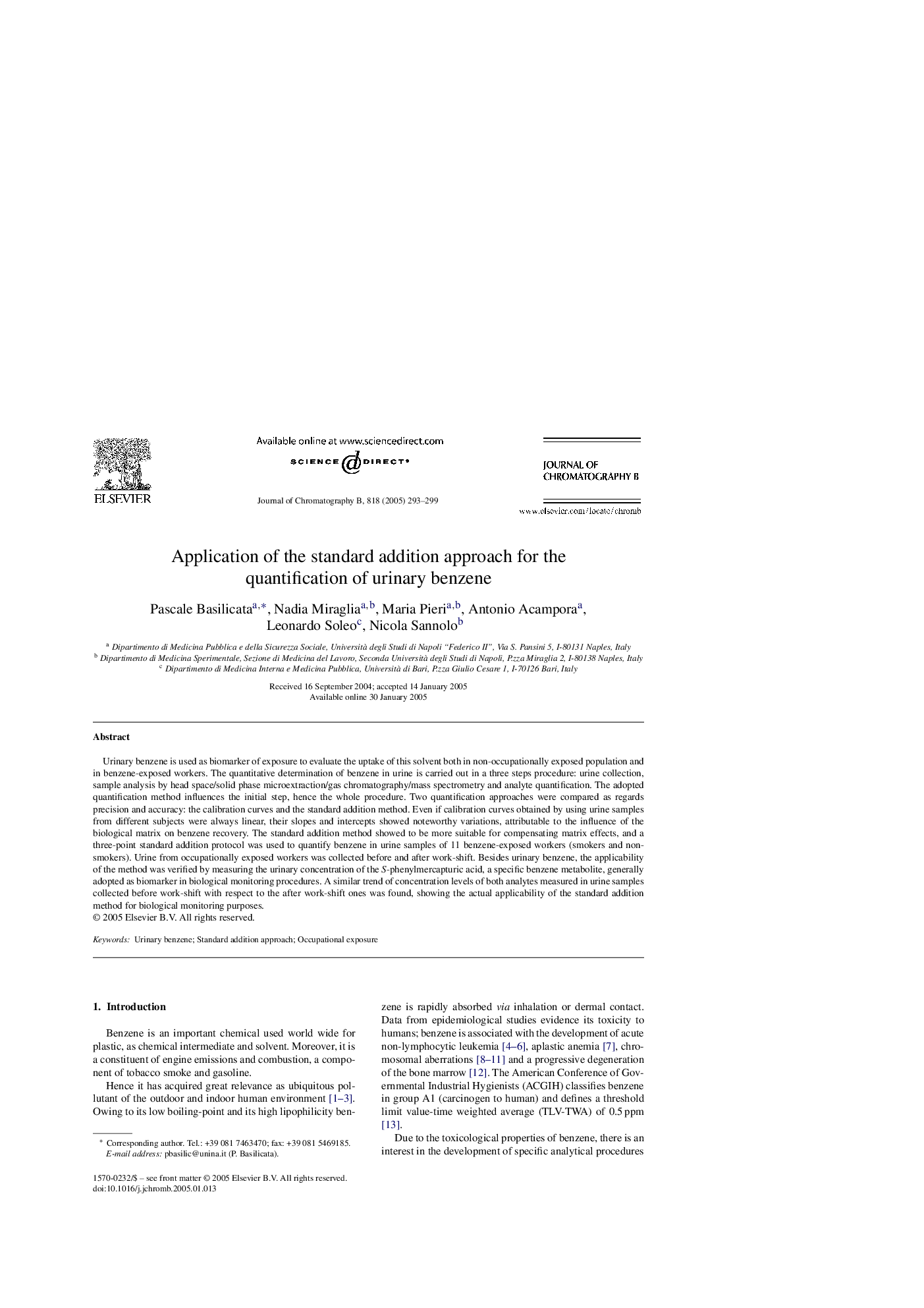| Article ID | Journal | Published Year | Pages | File Type |
|---|---|---|---|---|
| 10551211 | Journal of Chromatography B | 2005 | 7 Pages |
Abstract
Urinary benzene is used as biomarker of exposure to evaluate the uptake of this solvent both in non-occupationally exposed population and in benzene-exposed workers. The quantitative determination of benzene in urine is carried out in a three steps procedure: urine collection, sample analysis by head space/solid phase microextraction/gas chromatography/mass spectrometry and analyte quantification. The adopted quantification method influences the initial step, hence the whole procedure. Two quantification approaches were compared as regards precision and accuracy: the calibration curves and the standard addition method. Even if calibration curves obtained by using urine samples from different subjects were always linear, their slopes and intercepts showed noteworthy variations, attributable to the influence of the biological matrix on benzene recovery. The standard addition method showed to be more suitable for compensating matrix effects, and a three-point standard addition protocol was used to quantify benzene in urine samples of 11 benzene-exposed workers (smokers and non-smokers). Urine from occupationally exposed workers was collected before and after work-shift. Besides urinary benzene, the applicability of the method was verified by measuring the urinary concentration of the S-phenylmercapturic acid, a specific benzene metabolite, generally adopted as biomarker in biological monitoring procedures. A similar trend of concentration levels of both analytes measured in urine samples collected before work-shift with respect to the after work-shift ones was found, showing the actual applicability of the standard addition method for biological monitoring purposes.
Keywords
Related Topics
Physical Sciences and Engineering
Chemistry
Analytical Chemistry
Authors
Pascale Basilicata, Nadia Miraglia, Maria Pieri, Antonio Acampora, Leonardo Soleo, Nicola Sannolo,
